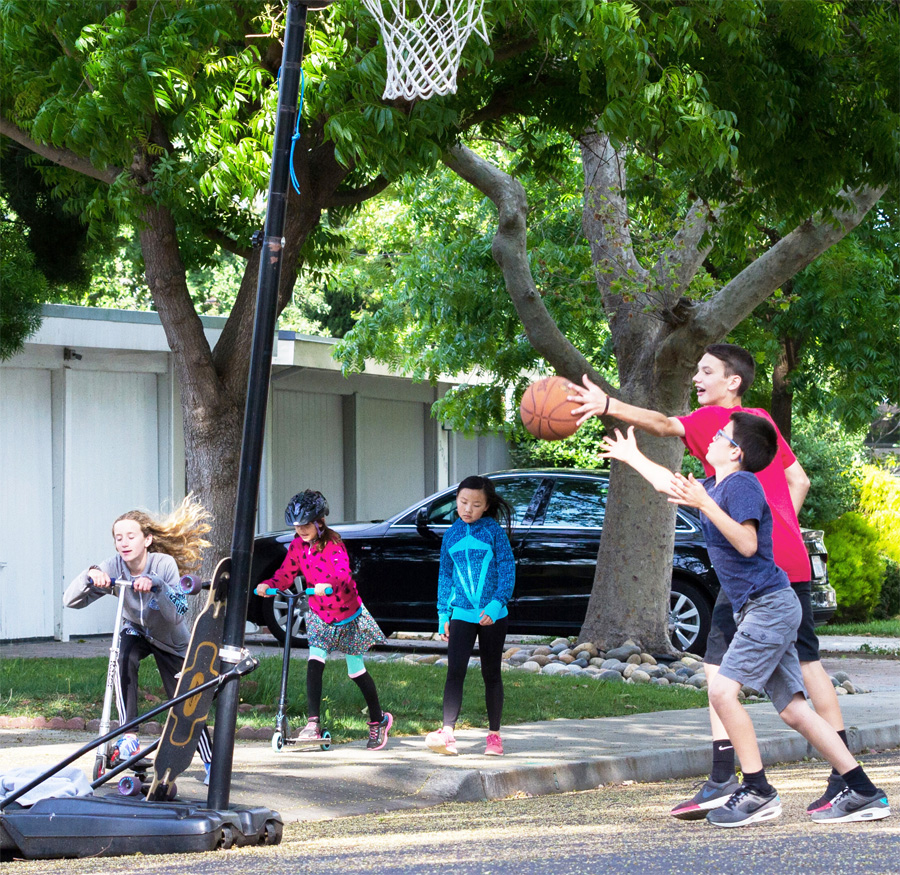Meet the Mackays - Page 2
 |
|
|
 |
|
|
 |
|
|
And then there was the time they used surgical tubing to create a giant slingshot at the end of the cul-de-sac to send water balloons flying.
The parents also get together on the court, for National Night Out, July 4 or Memorial Day, and enjoy get-togethers. "We're an informal but cordial and friendly group," Waddell says.
Today, unlike many Eichler neighborhoods, Maywood, which remains one of the best preserved of all the Mackay subdivisions, is far from a picture-perfect mid-century modern tract. Many homes have been remodeled beyond redemption, and there are second-story additions. Still, enough homes remain original that fans see a strong future here for mid-century mavens.
Modern Mackay homes were designed by Anshen and Allen, the firm that designed Joe Eichler's first architect-designed home and continued working with him until 1960.
It's a bit of a puzzle how John Calder Mackay (1920-2014) and his partner in the venture, Lawton Shurtleff (1914-2012), close friends from their Navy days during World War II, came to build modern homes. Their involvement with modernism was relatively brief, and seems a footnote to their broader careers.
Unlike Eichler, who built nothing but modern, the Mackay firm, which operated under several names, built only a handful of modern tracts. A 1961 ad for their 'Woodlands Walnut Creek' describes their typical product, "finer traditional homes for growing families," with such models as 'Cape Cod,' 'Rustic Ranch,' and 'New Orleans.'
During their partnership—Mackay and Shurtleff sold the firm in 1970—they built close to 10,000 houses in the Bay Area, Central Valley, and Salt Lake City, including a sprawling retirement community in San Jose, according to a family history written by Lawton Shurtleff and his son Bill Shurtleff.
Mackay's obituary credited the firm with building thousands of apartments and office parks.
Mackay and Shurtleff, both from prosperous backgrounds and both serious horsemen, made a great team, Bill Shurtleff says. Lawton Shurtleff, who had another career running an Emeryville tool company, worked at Mackay Homes several times a week but was an equal partner.
Mackay (black haired and thin, "well dressed, but not elaborate," a Stanford-trained lawyer) and Shurtleff (a Harvard MBA who was always in top shape thanks to morning lap swimming and homegrown organic produce) were politically conservative and deeply interested in political philosophy, Bill says. "They were both very devout patriots. They loved America and didn't want to see it go downhill."
Stories about how Mackay went modern may—or may not—speak to the question of the homes' importance in history. One tale told by some neighbors, that Mackay worked for Eichler, then absconded with his architects to build modern homes on his own, has no evidence to support it and is almost certainly false.




